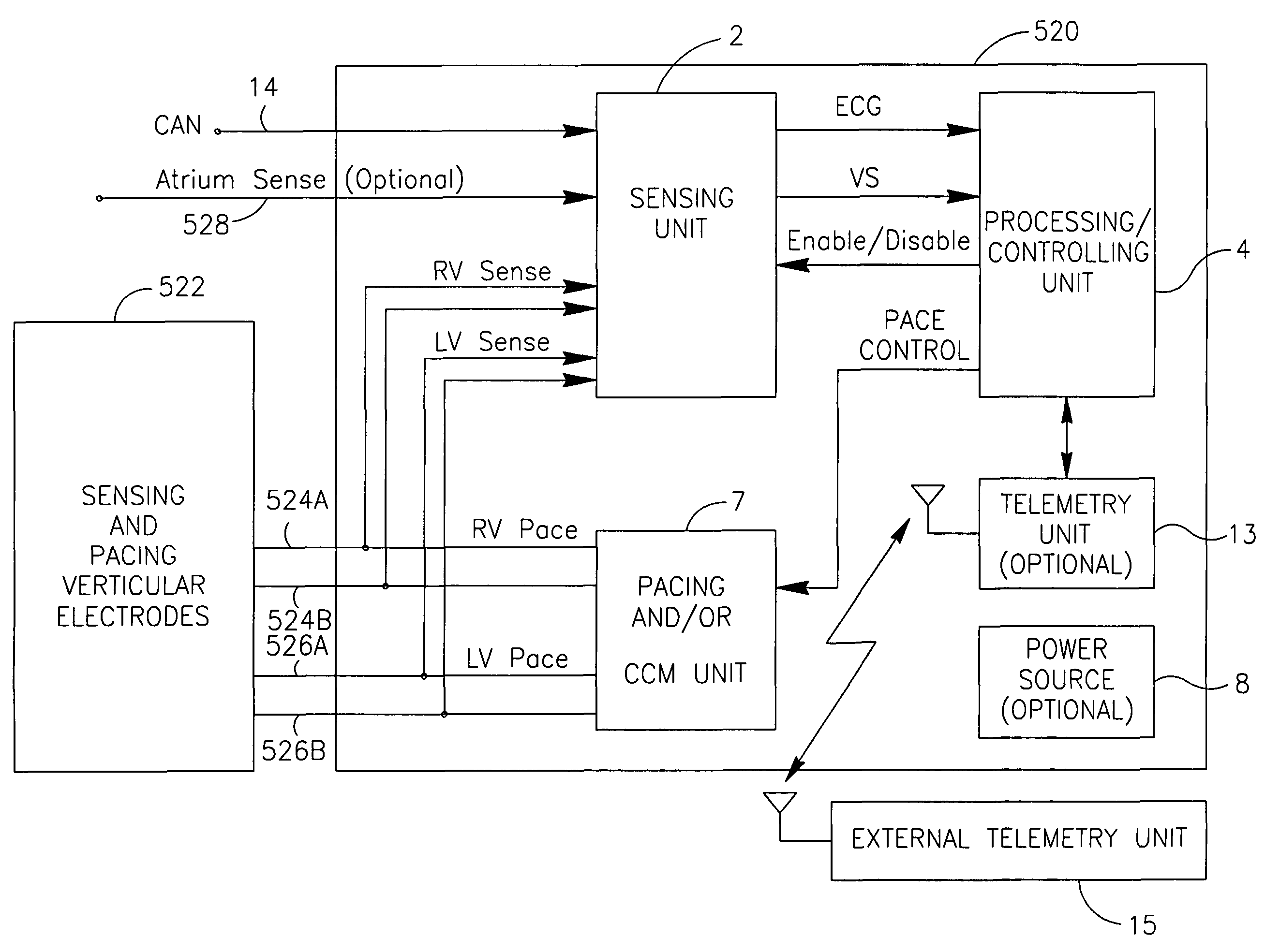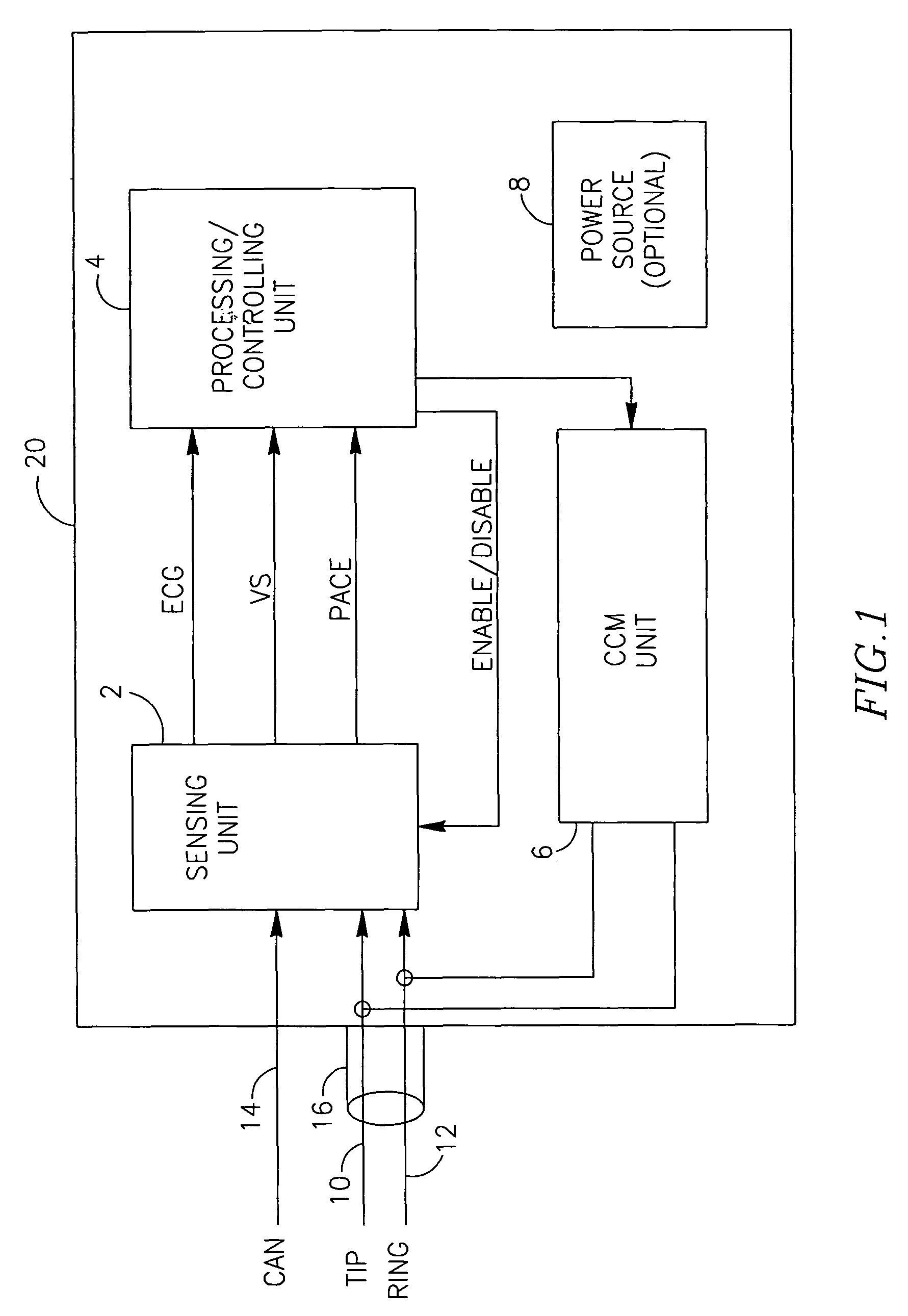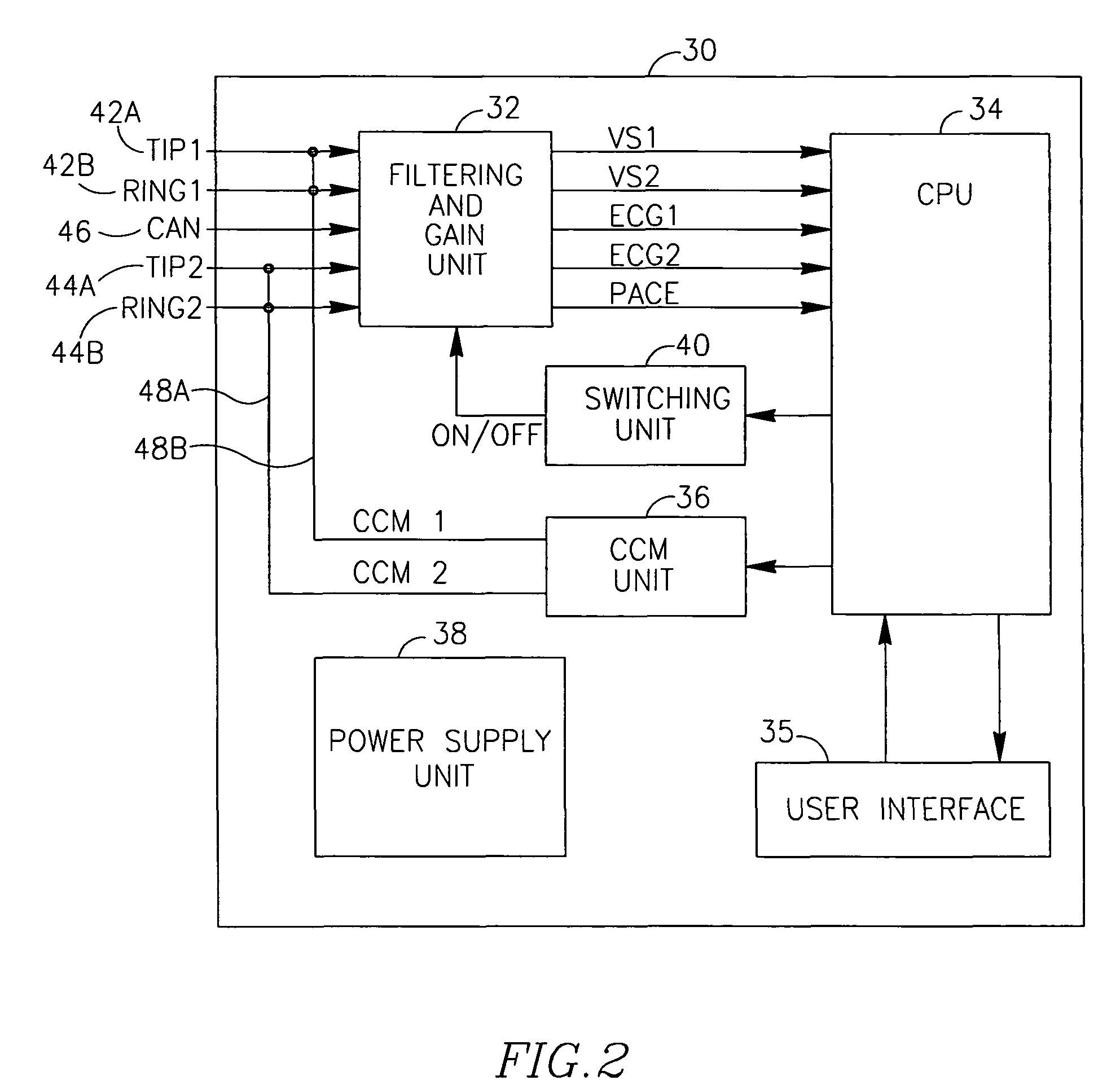Apparatus and method for delivering electrical signals to a heart
a technology of electrical signals and electrical signals, applied in bioelectric signal measurement, medical science, therapy, etc., can solve problems such as increased probability, difficulty in detecting cardiac muscle activity and contractility, and difficulty in detecting cardiac muscle activity and contractility, and achieve the effect of increasing the effective sensing range of unipolar differential recording
- Summary
- Abstract
- Description
- Claims
- Application Information
AI Technical Summary
Benefits of technology
Problems solved by technology
Method used
Image
Examples
Embodiment Construction
Notation Used Throughout
The following notation is used throughout this document.
[0101]
TermDefinitionBIVBiventricularCCMCardiac Contractility ModulatingCHFCongestive Heart FailureCSCoronary SinusGCVGreat Cardiac VeinHRHeart rateIECGIntra-cardiac ElectrocardiogramIEGMIntra-cardiac ElectrogramLUTLook Up TableLVLeft ventricleLVPLeft Ventricular PressuremsecmillisecondPACPremature Atrial ContractionPEPaced EventPVCPremature Ventricular ContractionRARight atriumRVRight ventricleSESensed EventSVCSuperior Vena CavaVSVentricular Signal
[0102]The application discloses, inter alia, devices systems and methods for delivering CCM signal(s) to a chamber of the heart undergoing electrical therapy (typically, one or more of the cardiac ventricles). The devices and methods are designed for inhibiting the delivery of the CCM signal(s) based on sensing electrical events at the cardiac chamber being therapeutically treated (regardless of electrical events in other cardiac chambers).
[0103]The devices and...
PUM
 Login to View More
Login to View More Abstract
Description
Claims
Application Information
 Login to View More
Login to View More - R&D
- Intellectual Property
- Life Sciences
- Materials
- Tech Scout
- Unparalleled Data Quality
- Higher Quality Content
- 60% Fewer Hallucinations
Browse by: Latest US Patents, China's latest patents, Technical Efficacy Thesaurus, Application Domain, Technology Topic, Popular Technical Reports.
© 2025 PatSnap. All rights reserved.Legal|Privacy policy|Modern Slavery Act Transparency Statement|Sitemap|About US| Contact US: help@patsnap.com



